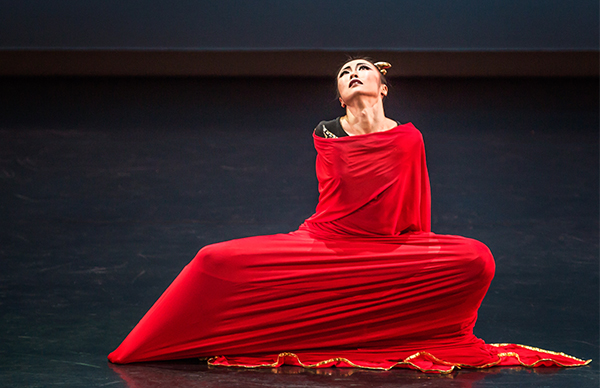Clytemnestra, choreographed in 1958, is the culminating piece of theater in Martha Graham’s Greek Cycle, a work of “giant stature,” according to New York Times critic John Martin. Commissioned by Bethsabée de Rothschild, Graham’s longtime benefactor, Clytemnestra has an original score by Halim El-Dabh. Isamu Noguchi designed a series of set pieces that transformed the stage from the underworld to a royal palace and then to the bedroom of a queen. The current production distills the original three-act ballet into one act. Clytemnestra was inspired by the Oresteia, Aeschylus’ famous trilogy of plays. Graham’s version recounts events from the perspective of Clytemnestra, the vengeful queen of Mycenae. As the dance begins, Clytemnestra is discovered in the underworld, where she argues with King Hades and relives the events of the bloody tale. She calls up images of the Trojan War and remembers the sacrifice of her daughter Iphigenia by her husband Agamemnon. She sees her children Orestes and Electra plotting to murder her as they seek vengeance for her murder of their father, Agamemnon. We then move in time to the eve of Agamemnon’s return from the Trojan War. The Night Watchman sees the signal announcing his return. The Furies anticipate the horrors to come. We see Clytemnestra’s lover, Aegisthus, suggest the murder of Agamemnon. We see Electra welcome her father and watch helplessly as Clytemnestra tricks him into stepping on to a red cloth that is reserved for the Gods. Cassandra the prophetess, Agamemnon’s mistress, warns us of the murders, and then we see them. Helen of Troy is seen lamenting all that her abduction has set in motion. Clytemnestra and Aegisthus have a drunken celebration. In the final section of the ballet, Clytemnestra is haunted by Agamemnon’s ghost who spurs Electra and Orestes to avenge his murder.
